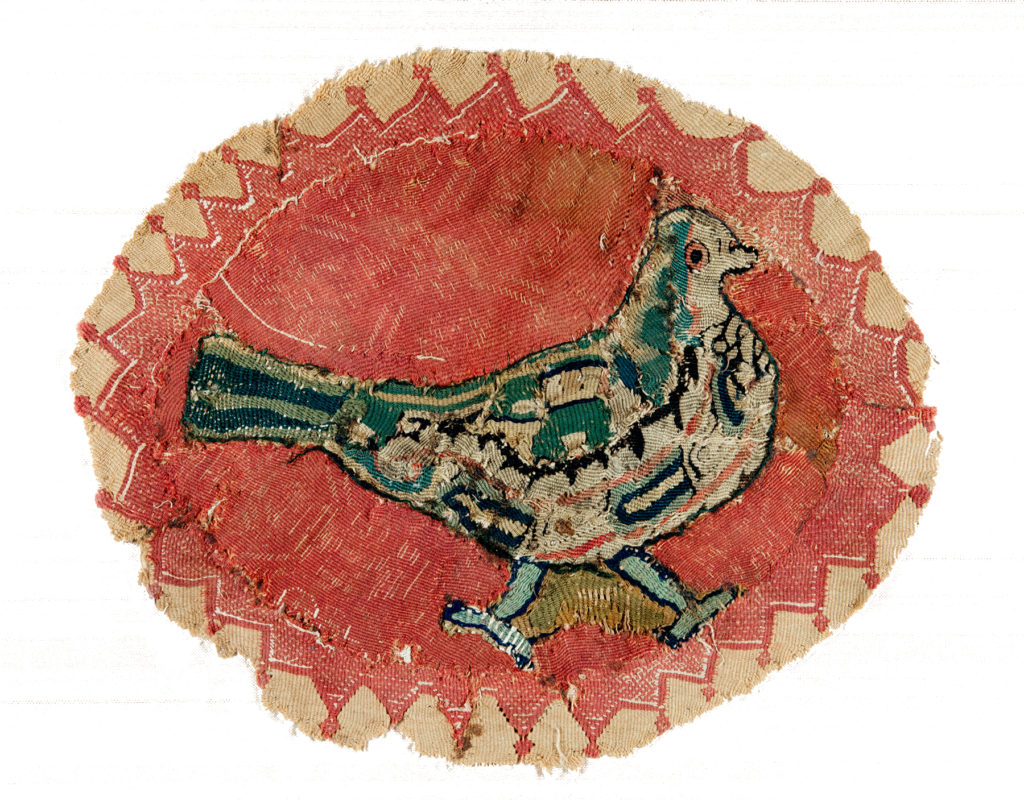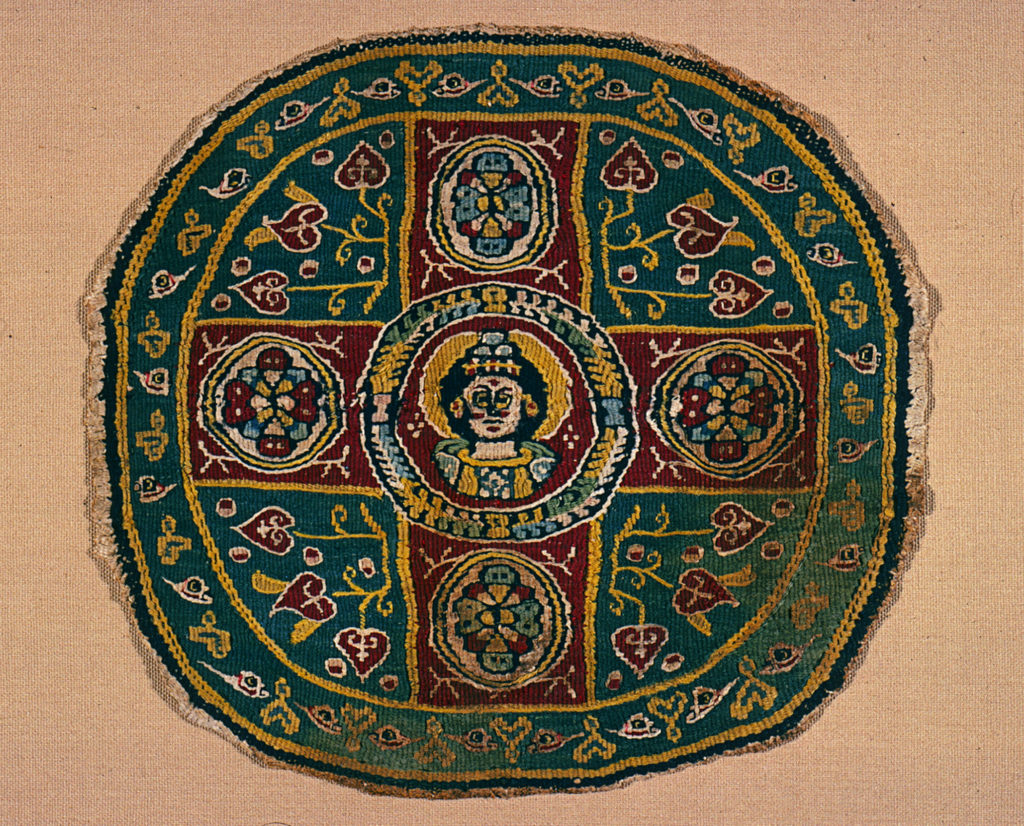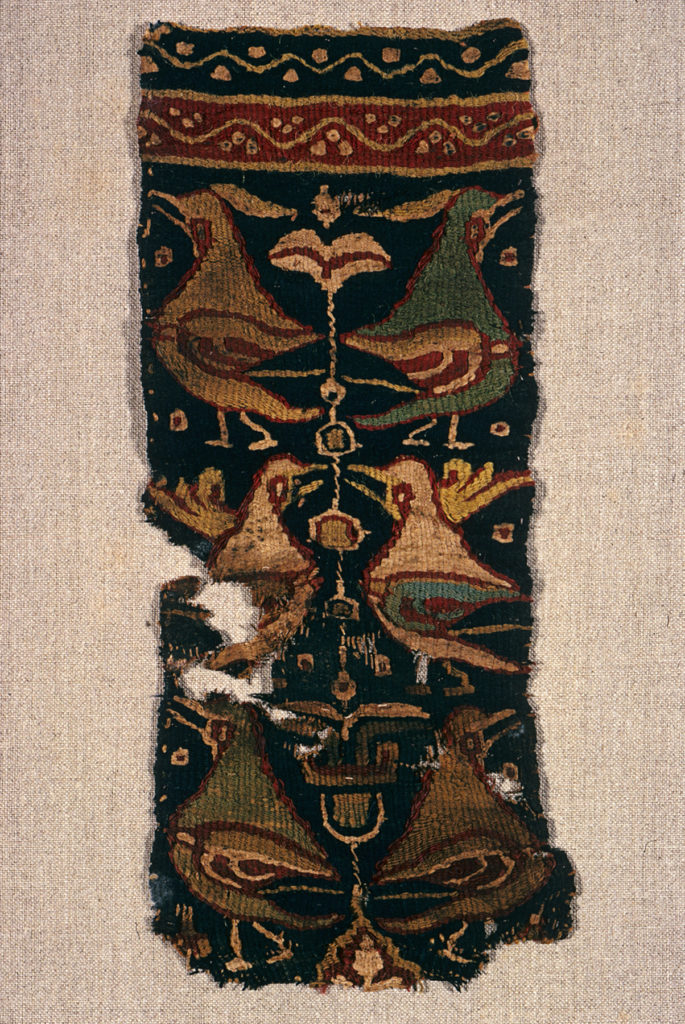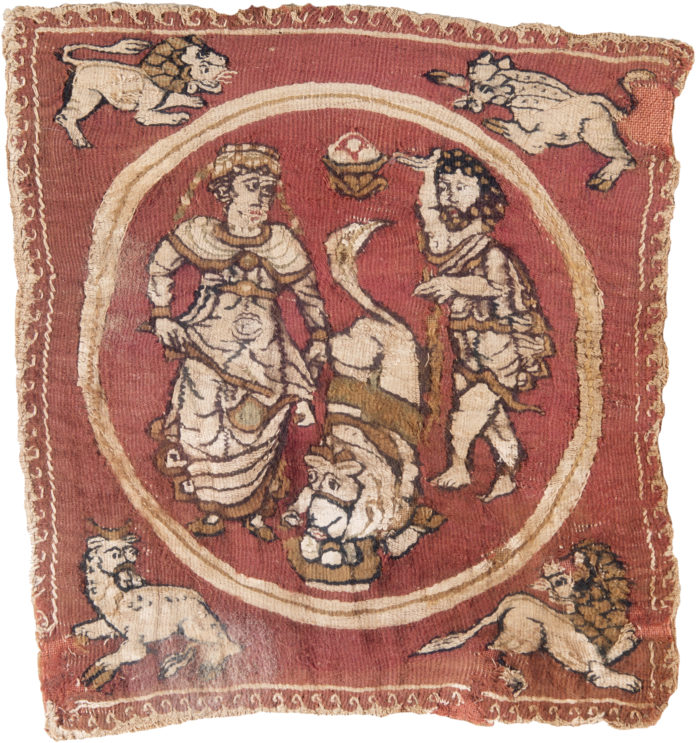https://mirrorspectator.com/2018/05/03/boston-college-mcmullen-museum-acquires-coptic-textile-collection-from-donald-and-barbara-tellalian/
Boston College McMullen Museum Acquires Coptic Textile Collection from Donald and Barbara Tellalian
The Tellalians, who have a long history with the McMullen as both exhibition lenders and visitors, chose the museum to house these important works, to ensure that they are accessible to future generations of students, scholars, and the public.

McMullen Museum of Art, Boston College; Tellalian Collection
The Tellalian Collection — which comprises 34 Late Antique/Coptic textiles from the fourth to eighth century — is significant due to the quality, importance and conservation of the textiles, as well as the related comprehensive library of 129 books and folios, many of which are rare volumes. Such textiles are thought to have been produced by Copts (Christian Egyptians) and other weavers throughout the Byzantine Empire. Their designs and motifs influenced the visual repertoire of the early Islamic period.
"The McMullen Museum is delighted to receive this transformational gift of one of the finest private collections of Late Antique textiles," said McMullen Museum of Art Director and Professor of Art History Nancy Netzer. "These works of art provide material evidence that complements the research and teaching interests of many Boston College faculty who focus on the transition from paganism to Christianity in the Late Antique world.
"Newton residents Don and Barbara Tellalian welcomed Boston College undergraduates to begin researching textiles in their collection for display in the McMullen exhibition 'Roman in the Provinces: Art on the Periphery of Empire in 2015.' During that process, the Tellalians became our and the students' role models as generous, scholarly collectors dedicated to passing on knowledge to future generations," according to Netzer.
The goal of the Tellalians, who collected the works over 40 years, through the late New York City antiquities dealer Charles Dikran Kelekian, as well as other international dealers and auction houses, is to make them available for study and exhibition at the McMullen. Plans are underway to exhibit the collection at the McMullen Museum, and to publish the works in an e-monograph.

McMullen Museum of Art, Boston College; Tellalian Collection
As founding principal of Tellalian Associates Architects & Planners, LLC, he spearheaded many projects for Boston-area cultural institutions. "Also, the Museum is nearby so that Barbara and I, as well as [son] Haig and [daughter] Rebecca with their families, our eight grandchildren, may occasionally visit," he added.
They also hope to "encourage others, who may have similar types of collections, to consider the McMullen as a repository. Those with artwork or collections can have influence and their donations have a significance that endures beyond the lives of the original owners," noted Barbara Tellalian, nonprofit development consultant, recognizing the value of such gifts.
"We realized that, under the leadership of Director and Professor of Art History Nancy Netzer and her colleagues at the McMullen, the libraries and the University, the collection of textiles and corresponding library would not just be buried in storage but would be an integral part of the education at Boston College," added Donald Tellalian.
Donald Tellalian noted that during 1965 and 1966, with a Fulbright Fellowship to pursue a study in museum design and exhibit presentation throughout Italy, the couple moved to Rome.

McMullen Museum of Art, Boston College; Tellalian Collection
"Two years after my leave of absence and return to my position at Shepley Bulfinch, the firm was selected to design the new wing of The Walters Art Gallery in Baltimore, now The Walters Art Museum. I was pleased to have participated in that interview with Hugh Shepley and be lead architect for the project, which was so well received. ("Progress with Taste at The Walters" Denys Sutton, Apollo Magazine, November 1974). During the opening reception for the new wing, Barbara and I were especially touched that Dick Randall, the museum's executive director, with whom I had worked very closely, and the curatorial staff had selected its notable collection of Armenian manuscripts as the opening special exhibit. (Armenian Manuscripts in the Walters Art Gallery Sirarpie Der Nersessian, Trustees of The Walters Art Gallery, Baltimore 1973). During that reception, Dick Randall introduced us to Charles Dikran Kelekian, an important dealer in antiquities, as was his father in Paris before him. They were key to many museum collections and notable collectors, including the Walters, both father and son. He offered us his business card and suggested we visit when in New York City," he noted.
A year later, the couple sought him out at his store. "While familiar with antiquities through international travel and exposure to museum collections, we were nevertheless overwhelmed by the four small galleries filled with Greco-Roman sculptures, architectural fragments, Egyptian Fayoum portraits, old German painted wood panels. But unlike a museum, you could touch and, if so inclined, purchase and take home!"
He continued, "Charles Kelekian knew that a young architect with a growing family would not have the financial means to purchase anything within those rooms. He took me into a back storage room and pulled open a large flat file drawer. Within those drawers were not piles of blueprints, but very colorful textiles! In his European accent so familiar to my ears, 'Don, this is what you must collect.' 'But Mr. Kelekian, what are these?' 'These are Coptic textiles,' he replied. Squirming out of an immediate commitment, I countered, 'Well, these look very interesting, but let me return to Boston and do some research so I may be a bit more knowledgeable.'
"Back at the Boston Public Library, I was astounded by the number of illustrated volumes on Coptic textiles. Beyond the visual attraction of such Late Antique/Coptic textiles, I learned of their sources, the excavations of burial sites in Egypt, the dress and the iconography of figures and patterns on both clothing and household fabrics. As an Armenian I was aware of Coptic Christianity. But through my reading I was reminded of the Council of Chalcedon, 451 CE and the close historic affinity between the Armenian Apostolic and Coptic Orthodox Churches."
A Collection Forms
Over the years, many of the textiles have been exhibited in major museums — including the Museum of Fine Arts, Boston, the Metropolitan Museum of Art in New York, the Walters Art Museum in Baltimore and the Rhode Island School of Design Museum. Images of many of the textiles have been published in exhibition catalogues and other publications.
The donors' introduction to the McMullen Museum was in 2008, with an exhibition of the work of Georges Rouault, who they say is "one of our favorite artists. Since then, we have enjoyed many of the McMullen's subsequent exhibits, each memorable and thoughtfully presented.
"In preparation for the 2015 exhibit Roman in the Provinces, which incorporated many of the textiles from the collection, we were delighted to interface with the students who each selected a textile for research and report. Their work was exceptional," according to the Tellalians.
"We extend our appreciation to Director Nancy Netzer, Assistant Director Diana Larsen, Associate Professor [of Classical Studies] Gail Hoffman, the staff, and to [Art and Film Senior Research] Librarian Nina Bogdanovsky. They are now 'the keepers,'" Donald Tellalian said.
The McMullen Museum offers exhibition-related programs and resources for diverse audiences of all ages on campus, in the Greater Boston area, and beyond. The Museum mounts exhibitions of international scholarly importance from all periods and cultures of the history of art. In keeping with the University's central teaching mission, exhibitions are accompanied by scholarly catalogues and related public programs.
The McMullen Museum of Art was named in 1996 for the late BC benefactor, trustee, and art collector John J. McMullen and his wife Jacqueline McMullen. In 2005, the McMullen Family Foundation provided a lead gift to renovate and build an addition to the Neo-Renaissance palazzo at 2101 Commonwealth Avenue. Designed in 1927 by architects Maginnis and Walsh, the building originally served as the home of Boston's cardinal archbishops. The renovation was completed in spring 2016 and opened to the public on September 12, 2016. It is located at 2101 Commonwealth Avenue, Boston, MA 02135 on BC's 65-acre Brighton Campus.
All events are free and open to the public. For information visit www.bc.edu/artmuseum.
-- Sent from my Linux system.

No comments:
Post a Comment